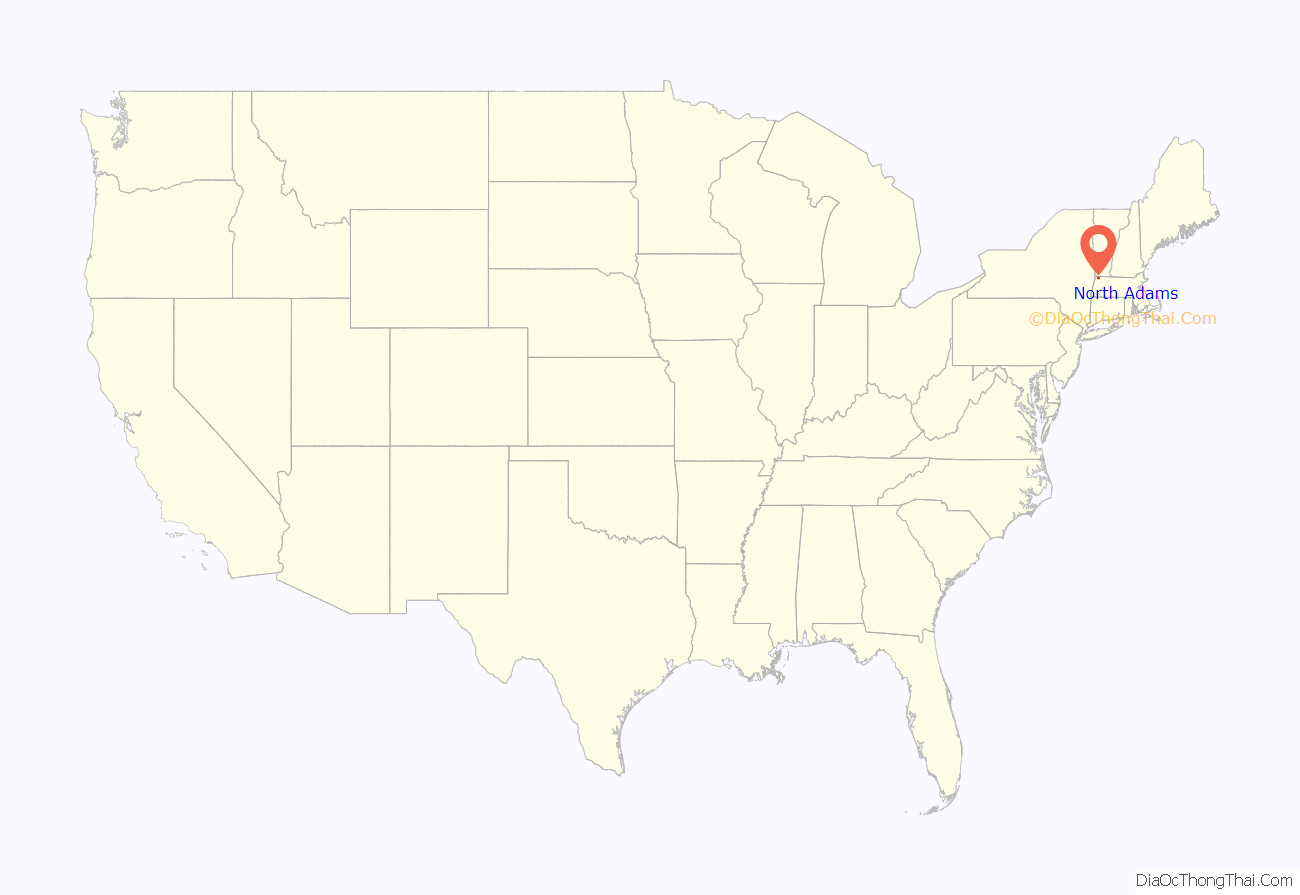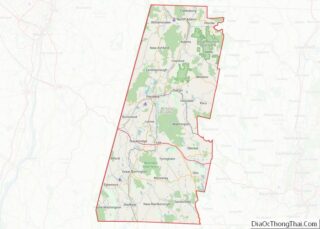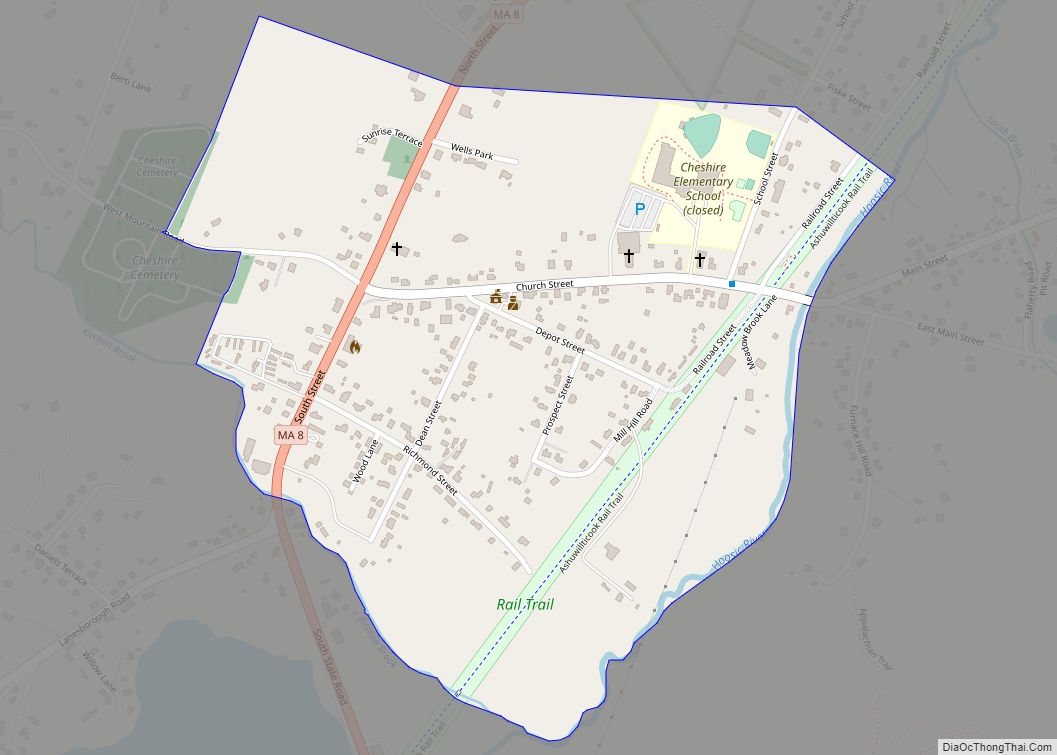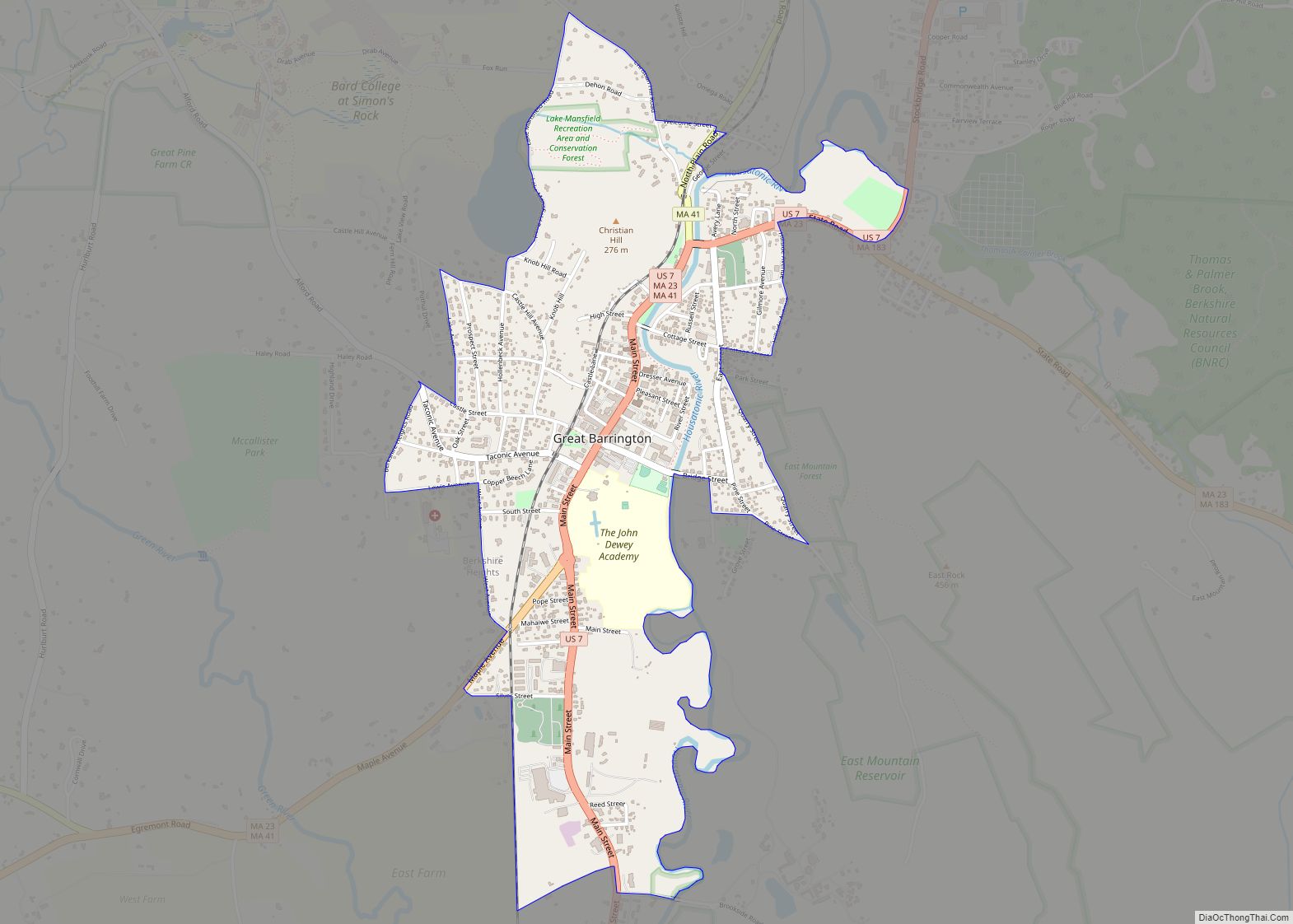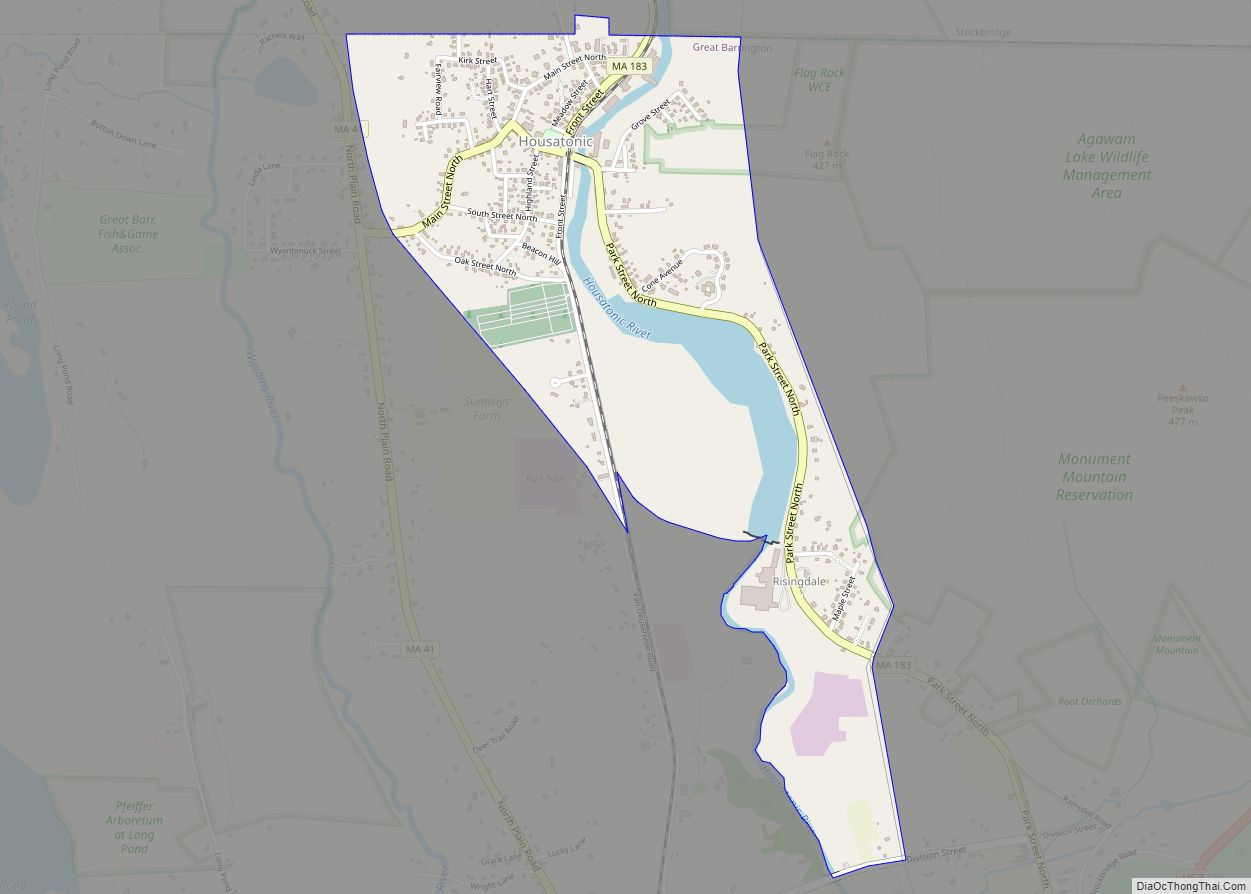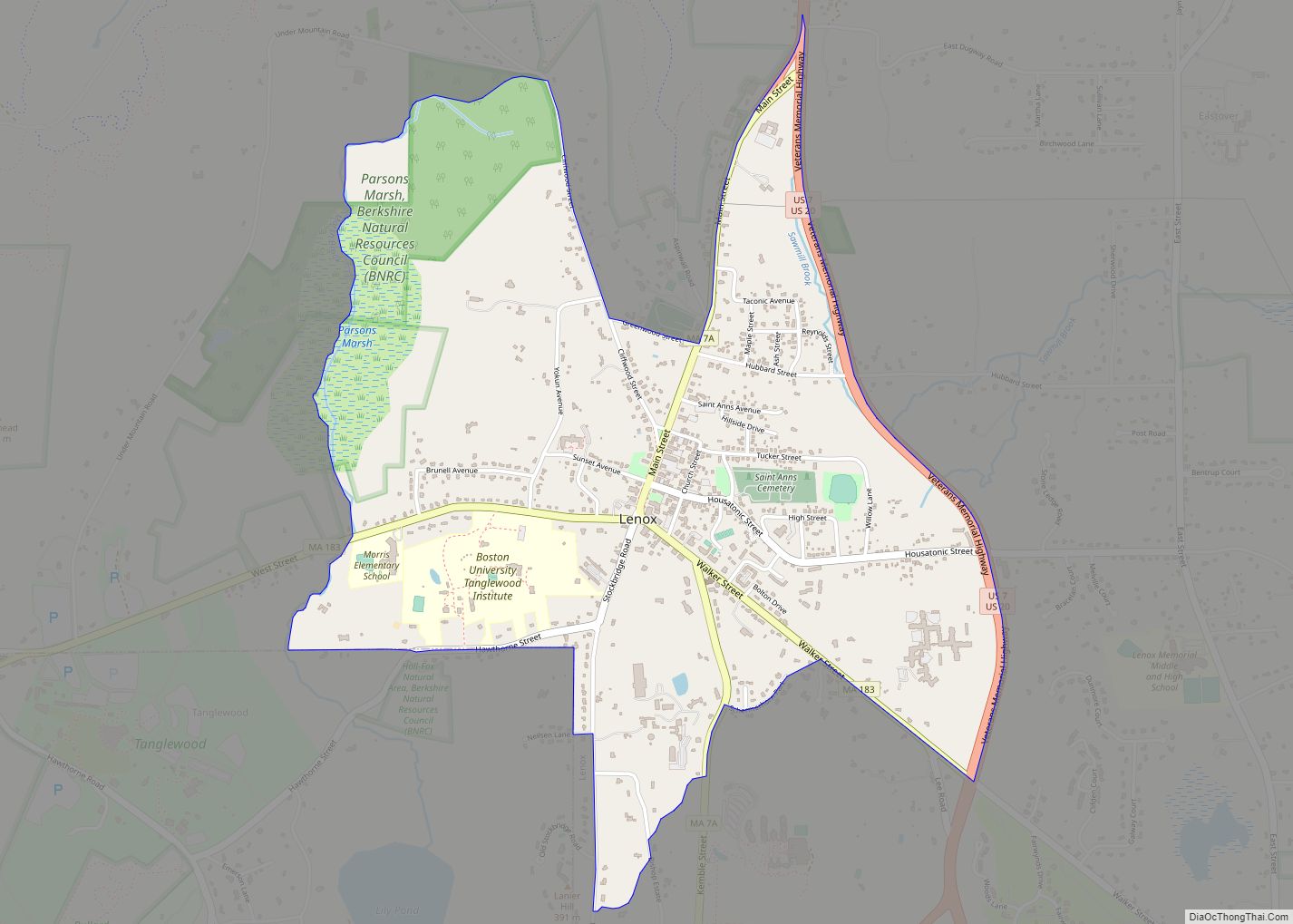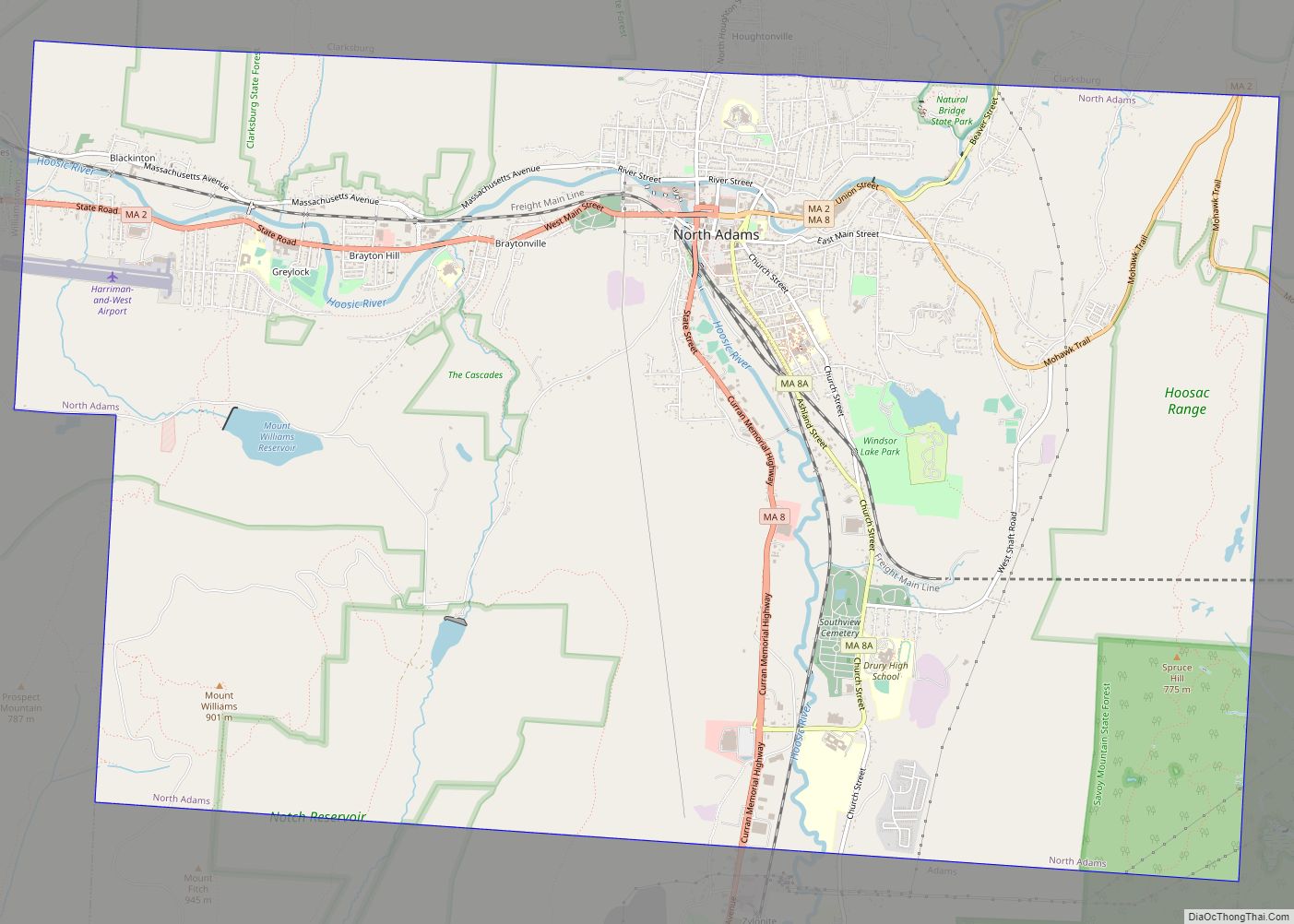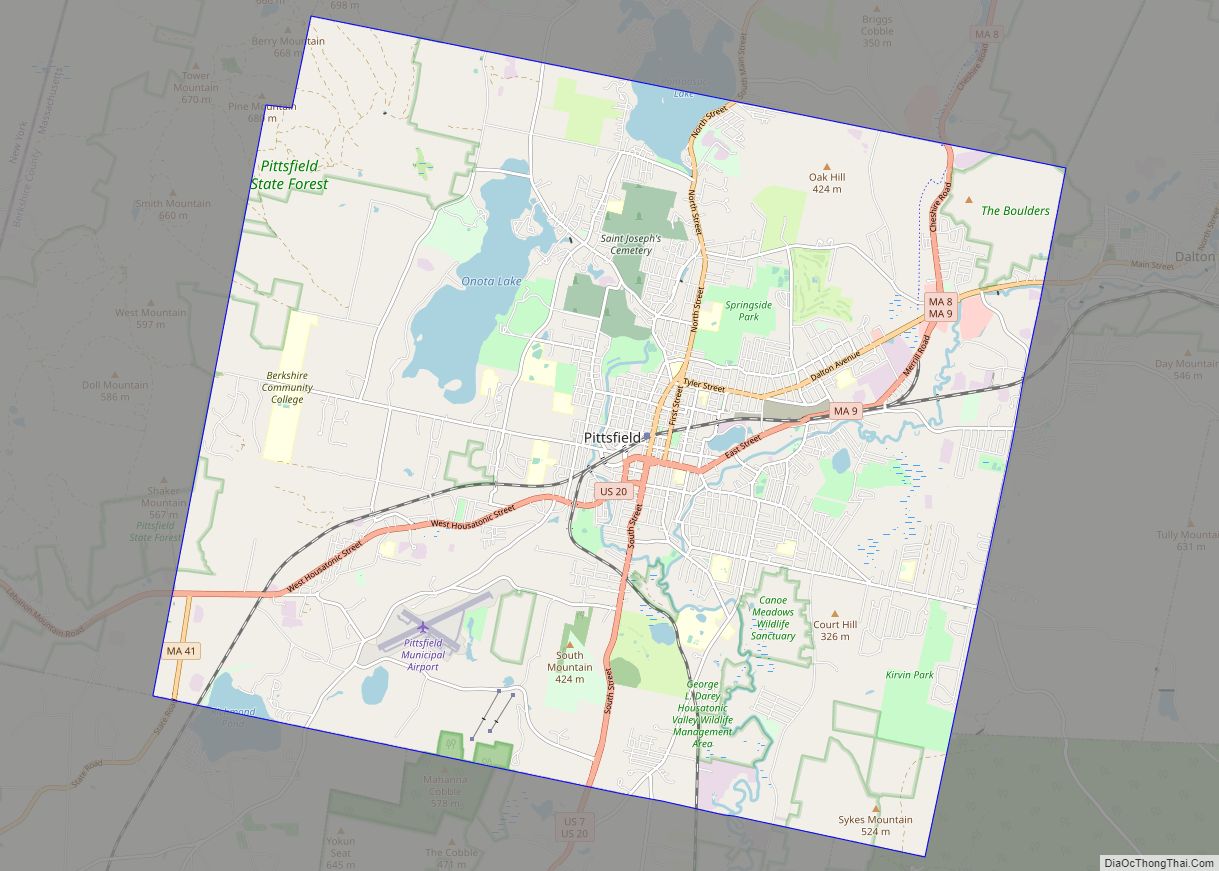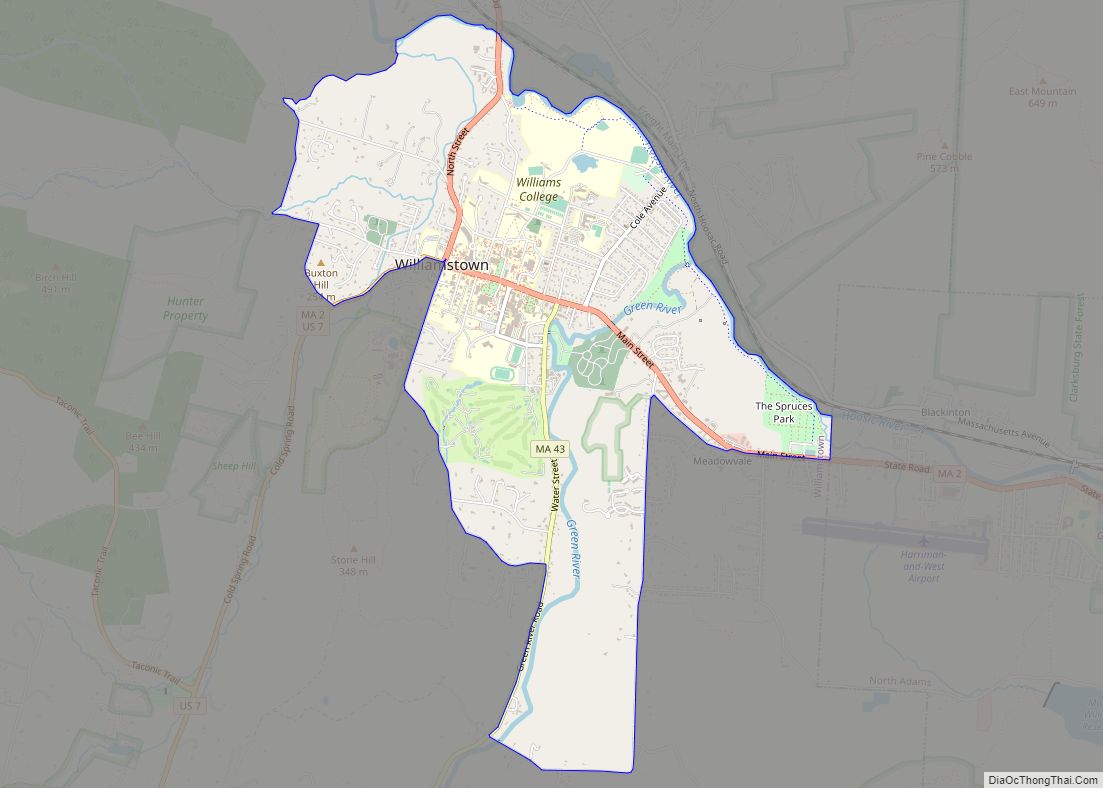North Adams is a city in Berkshire County, Massachusetts, United States. It is part of the Pittsfield, Massachusetts Metropolitan Statistical Area. Its population was 12,961 as of the 2020 census. Best known as the home of the largest contemporary art museum in the United States, the Massachusetts Museum of Contemporary Art, North Adams has in recent years become a center for tourism, culture and recreation.
| Name: | North Adams city |
|---|---|
| LSAD Code: | 25 |
| LSAD Description: | city (suffix) |
| State: | Massachusetts |
| County: | Berkshire County |
| Incorporated: | 1878 (Town) |
| Elevation: | 707 ft (215 m) |
| Total Area: | 20.61 sq mi (53.39 km²) |
| Land Area: | 20.35 sq mi (52.70 km²) |
| Water Area: | 0.27 sq mi (0.69 km²) |
| Population Density: | 637.00/sq mi (245.95/km²) |
| ZIP code: | 01247 |
| Area code: | 413 |
| FIPS code: | 2546225 |
| GNISfeature ID: | 0607610 |
| Website: | www.northadams-ma.gov |
Online Interactive Map
Click on ![]() to view map in "full screen" mode.
to view map in "full screen" mode.
North Adams location map. Where is North Adams city?
History
Early history
North Adams was first settled in 1745 during King George’s War, when the most western of a line of defensive forts was built along the bank of the Hoosic River, and occupied by British soldiers and their families. During the war, Canadian and Native American forces laid siege to Fort Massachusetts 30 prisoners were taken to Quebec; half died in captivity. In 1747 Fort Massachusetts was rebuilt with improved defenses, but was never attacked again. In a period of peace following the Treaty of Aix-la-Chapelle, many of the soldiers who had been garrisoned at the fort turned to farming instead by opting to each take a 190-acre package of nearby land in lieu of back-pay in the nearby township of West Hoosac (now known as Williamstown).
The North Adams Women’s Club began raising funds in 1895 to reconstruct the fort as a memorial site. It was dedicated in 1933 and operated as a historical tourist site until the 1960s. The 1933 Fort’s replica chimney is located at the rear of the Central Markets Supermarket that opened at the site in 1960 and closed in 2016 as a Price Chopper Supermarket. The historic site was conveyed to the City of North Adams by the Golub family in 2017.
The town was incorporated separately from Adams in 1878, and reincorporated as a city in 1895. The city is named in honor of Samuel Adams, a leader in the American Revolution, signer of the Declaration of Independence, and governor of Massachusetts.
For much of its history, North Adams was a mill town. Manufacturing began in the city before the Revolutionary War, largely because the confluence of the Hoosic River’s two branches provided water power for small-scale industry. By the late 1700s and early 1800s, businesses included wholesale shoe manufacturers; a brick yard; a saw mill; cabinet-makers; hat manufacturers; machine shops for the construction of mill machines; marble works; wagon and sleigh-makers; and an ironworks, which provided the pig iron for armor plates on the Civil War ship, the Monitor.
Expansion westwards started with the creation of three mill villages, Blackinton in 1821, Greylock in 1846 and Braytonville in 1832, located to take advantage of the Hoosac River’s water power. The 1850 census marked the official shift of the town from agriculture to industry, since more factory workers than farmers now resided in the town. In 1870 the use of Chinese strikebreakers from California to break the North Adams strike at the Sampson Shoe Factory (today part of the Mass MoCA complex) was an important step in the movement of Chinese from the west coast to the east coast, resulting in east coast Chinatowns in the United States. On a national scale, the North Adams strike became known as the primary trigger to the passage of the Chinese Exclusion Act by the U.S. Congress in 1882.
North Adams was also the headquarters for building the Hoosac Tunnel starting in 1851 and completed in 1874, adding an east–west connection to Boston and Albany to the existing 1842 rail connection to New York. Prior to that time, inter-regional travel was limited to weekly stagecoaches from Albany and Greenfield.
Downtown in 1860, Oliver Arnold and Company was established with the latest equipment for printing cloth. Large government contracts to supply fabric for the Union Army helped the business prosper. During the next four decades, Arnold Print Works became one of the world’s leading manufacturers of printed textiles. It also became the largest employer in North Adams, with some 3,200 workers by 1905. Despite decades of success, falling cloth prices and the lingering effects of the Great Depression forced the company to close its Marshall Street operation in 1942 and consolidate at smaller facilities in Adams.
Sprague Electric
Later that year, the Sprague Electric Company bought the former print works site. Sprague physicists, chemists, electrical engineers, and skilled technicians were called upon by the U.S. government during World War II to design and manufacture crucial components of advanced weapons systems, including the atomic bomb.
With state-of-the-art equipment, Sprague was a major research and development center, conducting studies on electricity and semi-conducting materials. After the war, its products were used in the launch systems for Gemini moon missions, and by 1966 Sprague employed 4,137 workers in a community of 18,000. From the post-war years to the mid-1980s, Sprague produced electrical components for the booming consumer electronics market, but competition from abroad led to declining sales and, in 1985, the company closed operations on Marshall Street. Its closure devastated the local economy. Unemployment rates rose and population declined.
MASS MoCA
After Sprague closed, business and political leaders in North Adams sought ways to re-use the vast complex. Williams College Museum of Art director Thomas Krens, who would later become Director of the Guggenheim, was looking for space to exhibit large works of contemporary art that would not fit in conventional museum galleries. When mayor John Barrett III (serving 1984–2009) suggested the vast Marshall Street complex as a possible exhibition site, the idea of creating a contemporary arts center in North Adams began to take shape.
The campaign to build support for the proposed institution, which would serve as a platform for presenting contemporary art and developing links to the region’s other cultural institutions, began in earnest. The Massachusetts legislature announced its support for the project in 1988. Subsequent economic upheaval threatened the project, but broad-based support from the community and the private sector, which pledged more than $8 million, ensured that it moved forward. The eventual proposal used the scale and versatility of the industrial spaces to link the facility’s past and its new life as the country’s largest center for contemporary visual and performing arts.
Since it opened, the Massachusetts Museum of Contemporary Art (MASS MoCA) has been part of a larger economic transformation in the region based on cultural, recreational, and educational offerings. North Adams has become home for several new restaurants, contemporary art galleries, and cultural organizations. In addition, once-shuttered area factories and mills have been rehabilitated as lofts for artists to live and work in.
North Adams Road Map
North Adams city Satellite Map
Geography
According to the United States Census Bureau, North Adams has a total area of 20.6 square miles (53.4 km), of which 20.3 square miles (52.7 km) is land and 0.27 square miles (0.7 km), or 1.31%, is water. North Adams is bordered by Clarksburg to the north, Florida to the east, Adams to the south, and Williamstown to the west.
North Adams is located in the valley created by the Hoosic River, which has been walled and floored with concrete in portions to prevent floods. The city’s Natural Bridge State Park contains the only natural white marble bridge in North America. Formed by glacial melt by 11,000 BCE, the arch and abandoned quarry have long attracted attention from hikers, including Nathaniel Hawthorne in 1838, who wrote of it (among other local features) in his An American Notebook. To the east, the city is bordered by the western face of the Hoosac Range, with visibility on its West Summit extending throughout the tri-state area. To the southwest, the city has the northern end of Mount Greylock State Reservation, ending at Mount Williams, which at 2,951 feet (899 m) above sea level is the highest point in the city. The Appalachian Trail passes through the western part of the city, crossing the summit of Mount Williams and briefly passing through Williamstown before heading north towards Vermont.
Climate
North Adams has a humid continental climate (Dfb). Winters can be harsh, with temperatures dropping to 0 °F (−18 °C) or colder 9 times per year. Summers are warm and pleasant, with temperatures at or above 90 °F (32 °C) four times per year. The record high is 96 °F (36 °C), recorded on July 8, 1988, and the record low is −20 °F (−29 °C), recorded on January 24, 2011 and February 6, 2015. On average, 153 days see measurable precipitation per year.
See also
Map of Massachusetts State and its subdivision: Map of other states:- Alabama
- Alaska
- Arizona
- Arkansas
- California
- Colorado
- Connecticut
- Delaware
- District of Columbia
- Florida
- Georgia
- Hawaii
- Idaho
- Illinois
- Indiana
- Iowa
- Kansas
- Kentucky
- Louisiana
- Maine
- Maryland
- Massachusetts
- Michigan
- Minnesota
- Mississippi
- Missouri
- Montana
- Nebraska
- Nevada
- New Hampshire
- New Jersey
- New Mexico
- New York
- North Carolina
- North Dakota
- Ohio
- Oklahoma
- Oregon
- Pennsylvania
- Rhode Island
- South Carolina
- South Dakota
- Tennessee
- Texas
- Utah
- Vermont
- Virginia
- Washington
- West Virginia
- Wisconsin
- Wyoming
